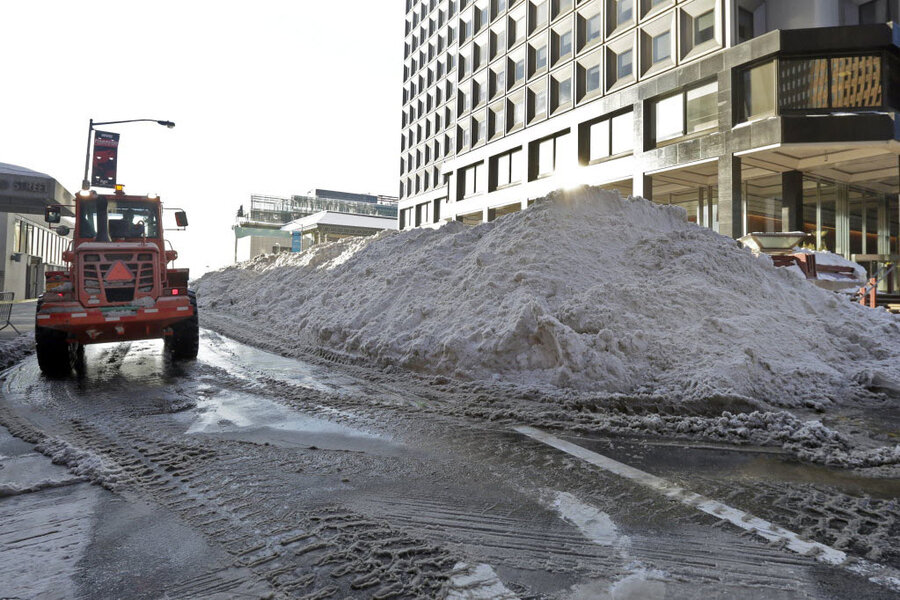East Coast blizzard may be long gone, but cleanup has only just begun
Loading...
The weekend's record-breaking East Coast blizzard has ended, but the challenges of getting around in its aftermath have only just begun.
Icy roads, runways, and train tracks, plus mounds of snow burying cars, equals a quiet start of the week for all except those responsible for getting transportation networks back up and running.
"I'm asking for residents to continue to be patient. ... A record amount of snow must be removed," Baltimore Mayor Stephanie Rawlings-Blake told reporters.
Measurements taken at Baltimore/Washington International Thurgood Marshall Airport show 29.2 inches of snow accumulation there, which is a record, reports CNN.
New York's Central Park received 26.8 inches, just shy of the record 29.9 inches seen in 2006. The official total for Washington Dulles International Airport came in at 17.8 inches, but there have been indications that measurement may be low. Philadelphia saw 22.4 inches of snow, the equivalent of the city's average snowfall for an entire season.
The last snowfall ended before midnight Saturday. In its aftermath on Sunday, city crews rushed to clear the streets and sidewalks of veritable ghost towns. Officials cautioned against unnecessary driving, despite commuter trains that were delayed or canceled.
"Tomorrow morning, conditions will be icy and dangerous," Maryland Gov. Larry Hogan said in a written statement Sunday, reported CNN. "By closing state offices tomorrow, crews can carry on with their work to clear state roads," he said.
Government offices in Maryland and Virginia were closed on Monday, as were federal offices in Washington, D.C. Schools from Washington to the Jersey Shore took Monday off; In the D.C. suburbs, classes also were canceled for Tuesday, giving students ample time to enjoy a video that went viral over the weekend of the National Zoo’s giant panda Tian Tian making snow angels.
New York City subways, buses and Metro-North Railroad service were operating on a normal schedule Monday, though the city’s transit authority could provide only partial service on the Long Island Rail Road because of switches and tracks that were frozen overnight.
Broadway reopened in New York after shutting down during the snowstorm. But museums in the nation's capital remained closed, and the House of Representatives postponed votes until February due to the storm's impact on travel.
Besides the challenge of quickly clearing snow and ice from their facilities and equipment, transit systems operators had to figure out how to get snowbound employees to work. Major airlines had to cancel hundreds of flights for Monday, after canceling 12,000 flights over the weekend, with limited service in New York City, Baltimore, and Philadelphia.
Amtrak operated a reduced number of trains on all its routes, serving many people who couldn't get around otherwise, spokesman Marc Magliari said. Bus and rail service was expected to continue a limited schedule around the region into Monday.
At least 31 people died across 11 states and the District of Columbia as a result of the storm. Many deaths resulted from heart attacks from shoveling snow, or from carbon monoxide poisoning from people trapped or waiting in their cars with the engine on.
"The message is, surrounding shoveling, to take breaks, to make sure that you hydrate, to make sure that you're checking on your neighbors. Volunteer to shovel their walkway," Washington chief medical examiner Roger Mitchell Jr. told reporters.
This report contains material from The Associated Press.






